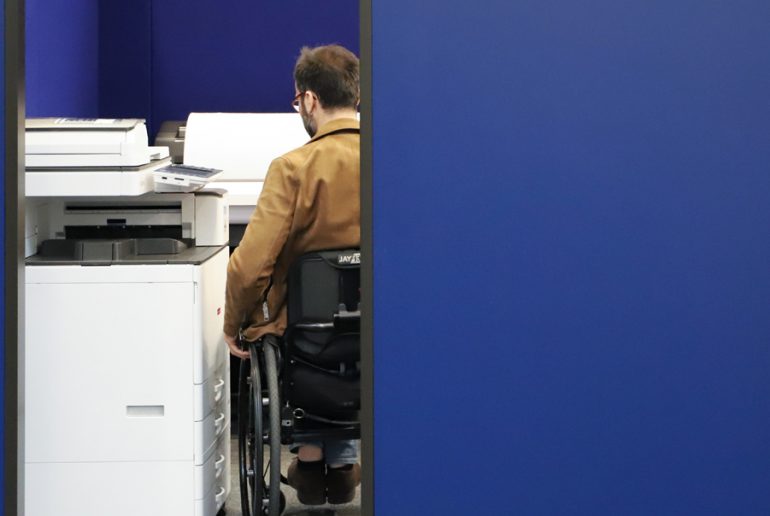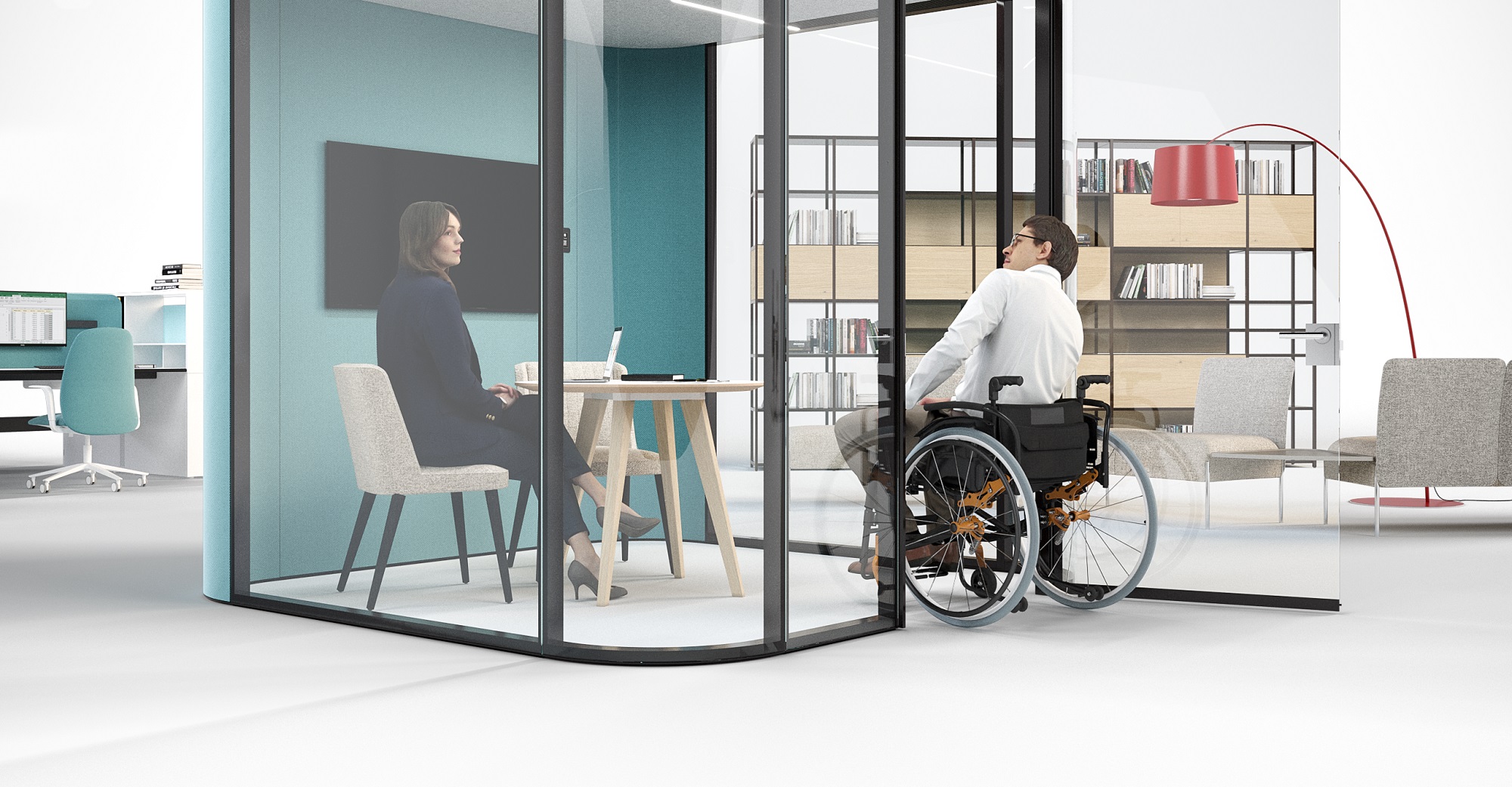How Do We Design Workplaces For Inclusivity And Diversity

Some small steps have been taken. But the path remains long. Despite legislative efforts, in Europe the disadvantage in accessing the labor market for people with disabilities remains considerable. A pity, as well as a violation of rights. Because one the most important inclusion effort passes through work. It is good for individuals and improves corporate business. However, it must be a true inclusion: not only for a legal obligation, but because it is perceived as a real added value. What is certain is that careful office layout design and the right furnishings can foster a (natural) inclusion of people with disabilities. We try to explain you how …
The Benefits of Inclusion
To reduce the distance between work and disability, first and foremost, barriers must be broken down. Physical, certainly, but also and above all cultural. This was reiterated recently by UE President Ursula Von der Leyen. « For persons with disabilities, it can be difficult to find a new job. They are constantly confronted with barriers that sometimes are simply insurmountable. It should not be so. Persons with disabilities have the right to have good conditions in the workplace, to live independently, to equal opportunities, to participate fully in the life of their community. ». It’s about putting people at the center. This is what Universal Design aims to do: a truly inclusive design, for everyone. As for all are the advantages of this philosophy:
- 88% of the population is more inclined towards more inclusive brands, as certified by the Diversity Brand Index. It was 63% in 2019, 52% in 2017.
- Inclusion is good for turnover. The revenue growth gap can exceed 20% between those who invest in diversification and inclusion and those who don’t¹.
The long way for Inclusion
Nevertheless, in Italy, for example, there is still a long way to go. Some regulatory interventions, above all Law 381/1991 and 68/1999, have improved the framework. The first regulating the social cooperatives for the work placement of the disabled. The second by acting on targeted placement.
Even today, however, in the word cloud of disability, the term work is displayed in too small a font. Suffice it to say that, as of 2019², only one third of people with disabilities between the ages of 15 and 64 have a job. On balance, 32.2% of individuals with severe limitations work against 59.8% of the able-bodied. In Europe the ratio is: 50.6% to 74.8%. It is Italy, however, that can establish the starting point for a change of course, involving the whole of society. How? Even just by being in the workplace, but a different workspace: more inclusive, more aware. In one word: better.

Breaking down the barriers? It can be done!
We at Estel have always been convinced that barriers, of all kinds, are made to be demolished. This is why we support a reality like ‘Lo spirito di Stella’. The non-profit organization is engaged in an awareness campaign on the theme of architectural barriers. It also promotes initiatives to promote the inclusion of disabled people in society.
As manufacturers of design furniture for home and office, we have brought this vision into our way of working. Over the years we have oriented our design approach to accessibility. We have eliminated the concept of “average user” by aiming for an inclusive design capable of enhancing differences to create innovation. The creation of products that are 100% usable even by people with disabilities goes in this direction. This is the case, for example, of the Sit&Stand desks with height-adjustable tops. But also of the Collaborative Room. In fact, our range of modular pods has no access thresholds. The interior spaces also allow people in wheelchairs to move around easily.
Discover
COLLABORATIVE ROOM
3 Powerful Ways To Nurture Inclusion At The Workplace
Never before in this area do facts count more than words. To foster inclusion you need commitment and foresight, openness and listening. And be aware that daring fairness is not a zero-sum game. Rather, it is an opportunity to be seized.
However, how to achieve real inclusion in the company? The international network The Valuable 500 has given some content on the subject. Between these:
- Communication: Investing in discussion and dialogue with employees with disabilities. Although everyone within the organization understands the importance of inclusion.
- Brand experience: Conduct a brand experience review to identify strengths and weaknesses.
- Project leadership: Educate teams to put inclusive design at the heart of product and service development.
REFERRALS
¹ Source: White paper Diversity e Inclusion, una nuova leva competitiva in azienda di Fondazione Adecco e Forbes
² Source: Istat; Eurostat; dossier L’inclusione lavorativa in italia delle persone con disabilità a cura dell’Ufficio Studi e dell’Osservatorio Statistico della Fondazione Studi Consulenti del Lavoro https://www.disabili.com/images/pdf/Dossier-lavoro-disabili.pdf



